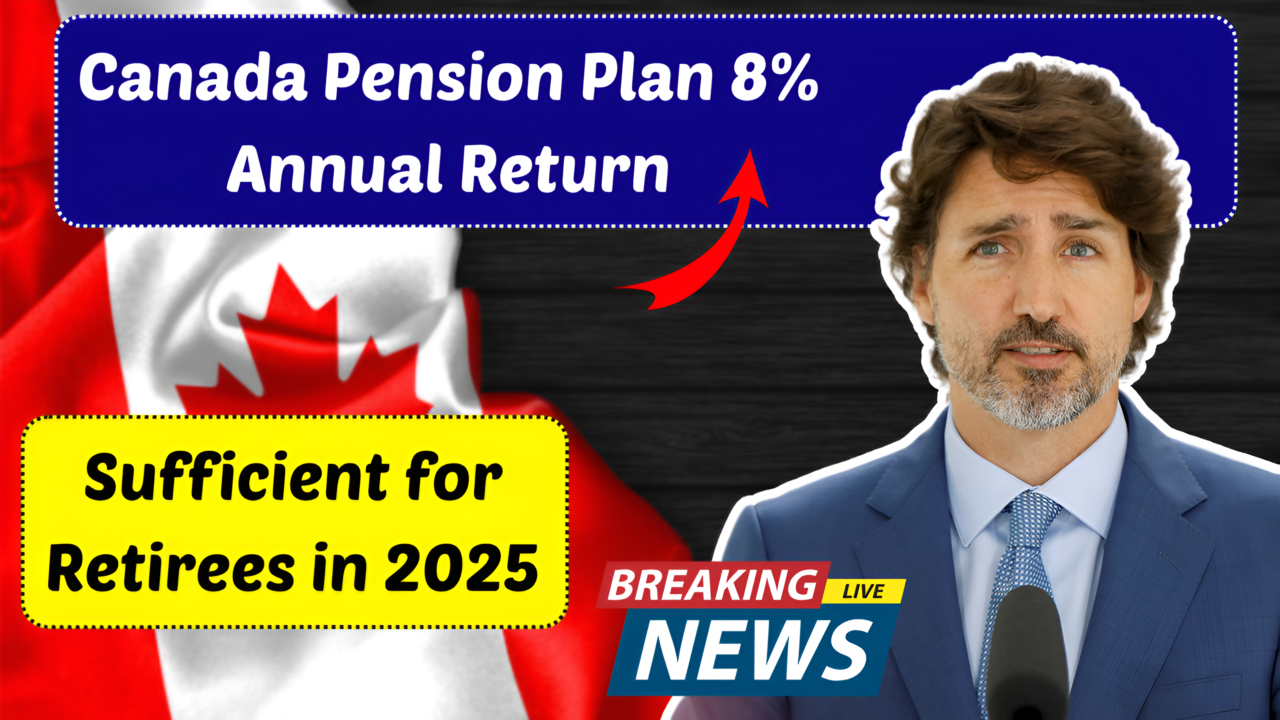The Canada Pension Plan (CPP) plays a crucial role in the retirement planning of millions of Canadians. With an annual return of approximately 8%, many individuals wonder if this rate is sufficient to sustain a comfortable retirement in 2025. While an 8% return sounds promising, several factors influence whether it meets the financial needs of retirees. This article delves into the sustainability of the CPP’s returns, considering inflation, cost of living, alternative investment opportunities, and expert opinions.
Understanding the Canada Pension Plan
The CPP is a government-managed retirement benefits program designed to provide financial support to Canadian workers upon retirement. Employees contribute a portion of their earnings, and in return, they receive a pension payout upon reaching the eligible age. The CPP aims to replace part of a retiree’s pre-retirement income, but it is rarely sufficient on its own.
The 8% annual return refers to the increased benefits for individuals who delay taking CPP past the age of 65. For each year deferred up to age 70, the pension amount increases by approximately 8%, making it an attractive option for those who can afford to wait.
Factors Affecting the Sufficiency of an 8% Return
1. Inflation and Cost of Living
One of the most significant challenges facing retirees is inflation. Over the past few years, inflation rates have fluctuated, sometimes reaching levels that diminish purchasing power. If inflation continues to rise at an annual rate of 3% or more, the real value of an 8% return could be significantly lower. Essential expenses such as healthcare, housing, and food costs continue to rise, making it crucial to evaluate whether CPP benefits alone are enough.
2. Rising Healthcare Costs
As retirees age, healthcare becomes a major expense. Prescription medications, long-term care facilities, and specialized medical treatments are costly, and government-provided healthcare does not always cover everything. While the CPP provides a steady income, relying solely on it may not be enough to cover medical expenses, which can escalate rapidly in retirement.
3. Lifestyle and Spending Habits
The sufficiency of an 8% return largely depends on an individual’s lifestyle. Those with minimal expenses, no mortgage, and conservative spending habits may find CPP benefits adequate. However, retirees who enjoy travel, dining out, or supporting their families financially may struggle to make ends meet on CPP alone.
4. Additional Retirement Savings and Investments
Retirees who have additional sources of income, such as Registered Retirement Savings Plans (RRSPs), Tax-Free Savings Accounts (TFSAs), or rental income, may find an 8% CPP return sufficient as part of a diversified income strategy. Those relying solely on CPP may face financial challenges, highlighting the importance of a well-rounded retirement plan.
5. Employment Opportunities for Seniors
Many retirees are choosing to work part-time or engage in freelance work to supplement their CPP income. Whether out of necessity or personal fulfillment, additional earnings can make an 8% return more sustainable. However, not all retirees can or want to work beyond a certain age.
Strategies to Maximize Retirement Income
1. Delaying CPP Benefits
One of the best ways to maximize CPP income is by delaying benefits until age 70. Each additional year of deferral increases the payout, resulting in a more substantial monthly benefit.
2. Investing in Growth-Oriented Assets
Retirees should consider diversifying their portfolios by investing in stocks, bonds, and real estate. While conservative investments provide stability, growth-oriented assets can help maintain purchasing power.
3. Reducing Expenses and Budgeting Wisely
A well-planned budget can help retirees stretch their CPP benefits further. Cutting unnecessary expenses, downsizing to a smaller home, or relocating to a lower-cost area are viable options.
4. Taking Advantage of Government Programs
In addition to CPP, retirees can explore other government support programs such as Old Age Security (OAS) and the Guaranteed Income Supplement (GIS). These programs provide additional financial assistance to those with lower incomes.
Expert Opinions on CPP Sufficiency
Financial experts generally recommend that individuals aim for a retirement income that replaces at least 70% of their pre-retirement earnings. Since CPP alone typically replaces only about 25% to 33% of an average worker’s salary, it is rarely sufficient on its own. Experts advise retirees to complement CPP with personal savings, employer pensions, and other income sources.
Conclusion
While the Canada Pension Plan’s 8% annual return is beneficial, it may not be sufficient for all retirees in 2025. Inflation, healthcare costs, and individual lifestyle choices play a crucial role in determining financial security during retirement. To ensure a comfortable post-retirement life, individuals should adopt a well-rounded financial strategy that includes delaying CPP benefits, investing wisely, and budgeting effectively. By planning ahead, retirees can make the most of their CPP benefits while securing their financial future.
F&Q
Is the 8% annual return on CPP guaranteed?
The 8% increase applies only if you delay CPP benefits beyond age 65, up to age 70. It is not an investment return but an incentive for deferral.
Can I rely solely on CPP for retirement?
No, CPP typically replaces only 25–33% of pre-retirement income. Experts recommend supplementing it with RRSPs, TFSAs, or employer pensions.
How does inflation impact CPP benefits?
CPP benefits are adjusted for inflation, but rising costs of healthcare and living expenses may reduce their real value over time.
What other government benefits can retirees access?
Retirees may qualify for Old Age Security (OAS) and the Guaranteed Income Supplement (GIS) for additional financial support.
Should I delay CPP benefits until age 70?
If you can afford to, delaying CPP increases your monthly benefit, making it a viable strategy for maximizing retirement income.



